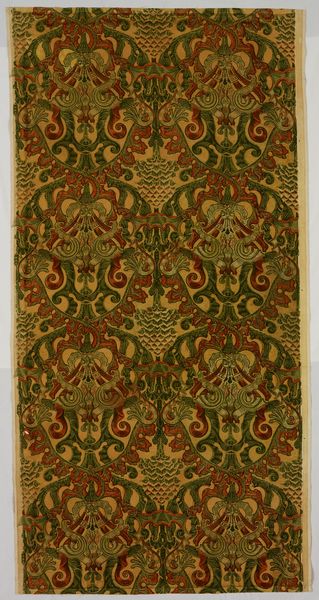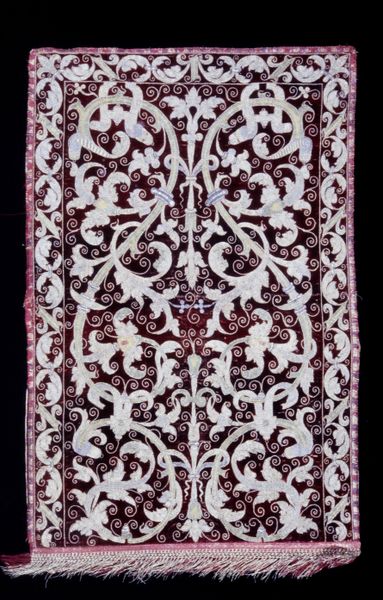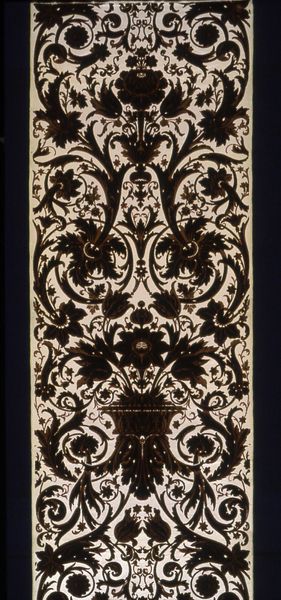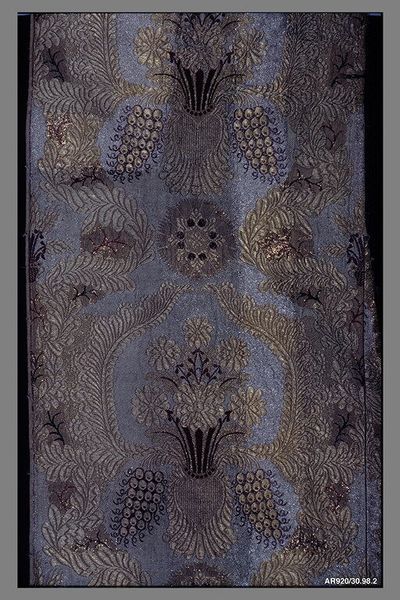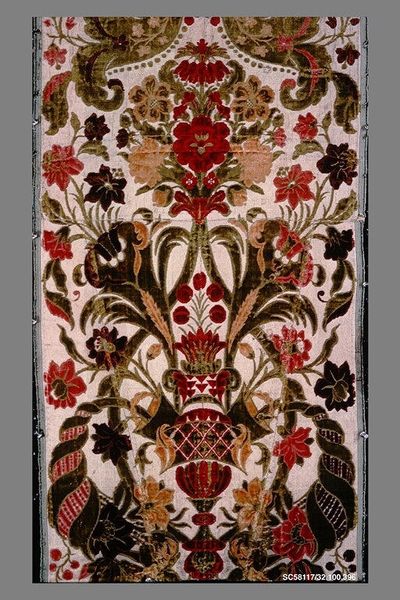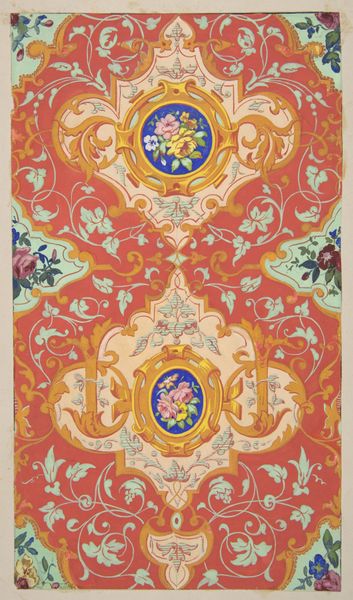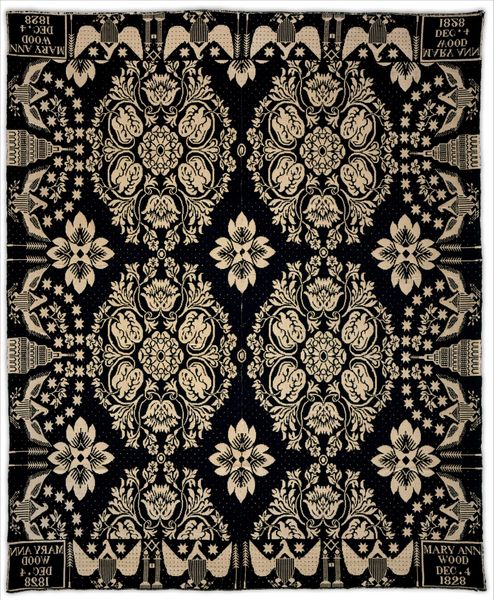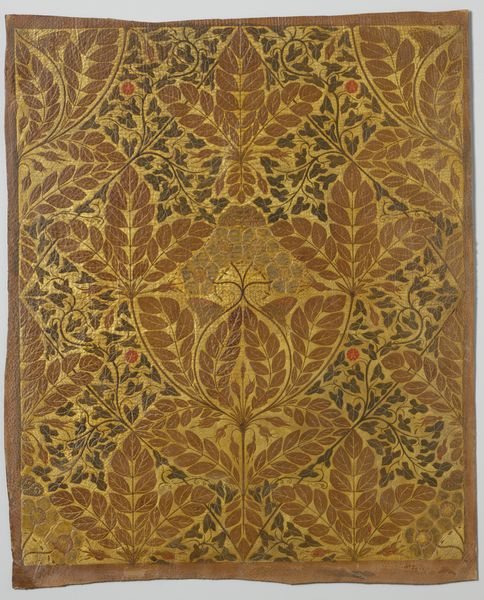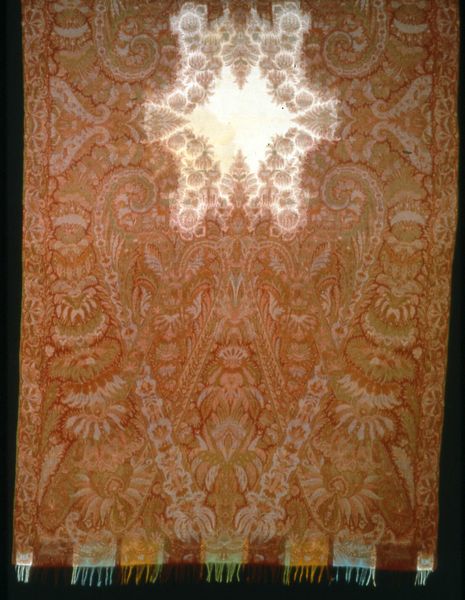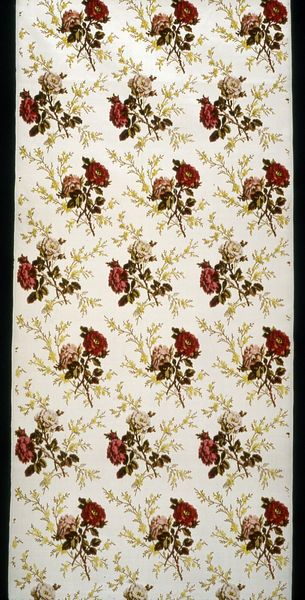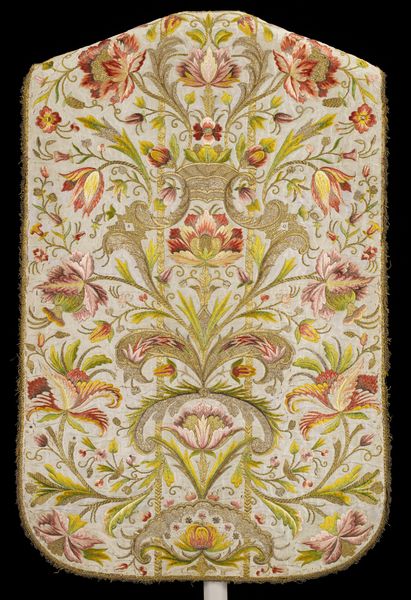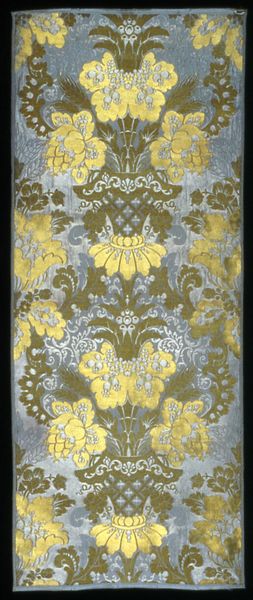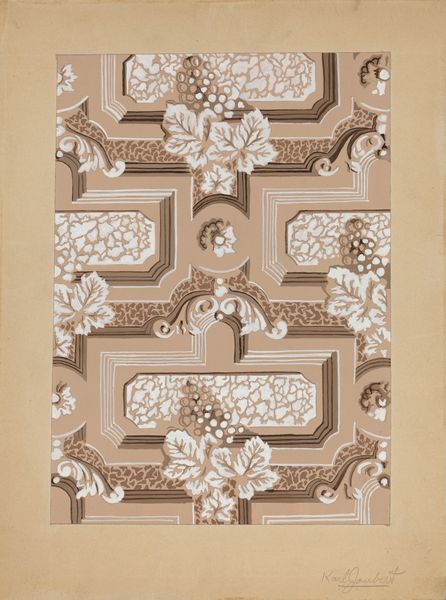
silk, textile
#
silk
#
textile
#
organic pattern
Dimensions: 78 x 41 1/2 in. (198.12 x 105.41 cm)
Copyright: Public Domain
Curator: Take a moment to observe this piece titled "Panel," created by Prelle in 1876. It is a textile crafted from silk, and we're fortunate to have it here at the Minneapolis Institute of Art. What are your initial impressions? Editor: It’s ornate, isn't it? Overwhelming, even. The patterns within patterns suggest a kind of suffocating opulence. Curator: That's a great observation. Think about the time period. Prelle, as a textile manufacturer, would have been catering to a specific market – a wealthy, consumerist class eager to display its affluence. Silk production itself was a global enterprise involving complex labor systems, from silkworm cultivation to weaving. Editor: Precisely! And the "Pattern and Decoration" art movement connections, though arguably applied retrospectively, bring to light questions of gendered labor. Textiles, often seen as 'women's work,' were historically devalued compared to other art forms like painting or sculpture. We should be thinking about who was making this panel, under what conditions, and for whose benefit? Curator: Indeed, and the design itself evokes questions about the natural world. The abundance of organic patterns, the floral motifs... Are these simply decorative, or do they point to a romanticized, perhaps even exploitative, view of nature as a resource? Editor: Exactly. The romantic floral designs disguise what were essentially manufactured landscapes in the textile mills themselves. By examining the cultural values woven into this panel's fibers we might gain insight into the relationship between consumption, aesthetics, and labor. Curator: What's also fascinating is the repetitive nature of the pattern. It speaks to the industrial processes behind textile production at the time. We’re reminded that textiles were among the earliest consumer goods mass-produced, influencing social systems around the globe. Editor: I’d agree. A work such as this acts as a lens. It not only displays the art of weaving, but also provides insight into complex narratives of wealth, the gendered labor of its production, and society's shifting values. Curator: I'm glad you've touched on those topics, it allows us a further, fuller exploration of this singular and intriguing panel. Editor: Yes, bringing this work into conversation highlights crucial cultural dynamics that persist to this day.
Comments
minneapolisinstituteofart almost 2 years ago
⋮
Using historical design motifs as inspiration for contemporary expression is an age-old practice. The 19th century designers who created this fabric were inspired by the bold, baroque designs of the 18th century. This particular velvet is made up of a central panel and two border panels. The units, designed to complement each other, were made so they could accommodate a variety of room configurations.
Join the conversation
Join millions of artists and users on Artera today and experience the ultimate creative platform.
